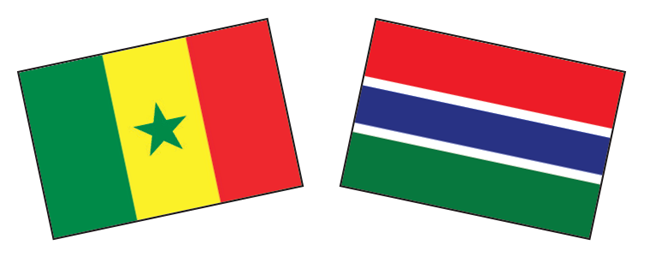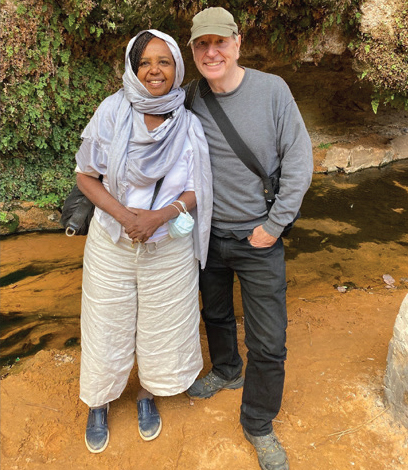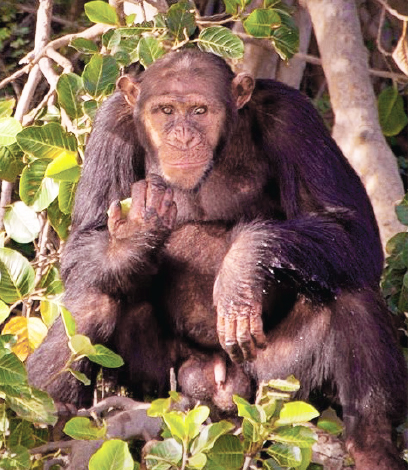
By Ed Hotchkiss
Ed writes about his extensive travels on ExploringEd.com. He is a published photographer whose latest book of black and white photos has just been released, Station to Station: Exploring the New York City Subway.

In December 2021, my wife Khadija and I went to the contiguous countries of Senegal, (ten days), The Gambia (three days) and Mauritania (seven days — see our Info file in the TCC Forum.) Information on travel through West Africa is not readily available and security conditions can vary over time and among countries.
More time can be spent to see all countries thoroughly, however, we felt we now have a good understanding of each country. We contacted local drivers and guides to help us. In the developing countries we’ve been to, everyone uses WhatsApp. It is much easier for them than email and international phone calls — messaging costs nothing.
In Senegal we toured the northwest, where most attractions are. Through searching online blogs, we were fortunate to find a person who is both a guide and driver (a good value with the right person), Youssou Badji (+221-7765-76232). He speaks fluent French and Wolof (both national languages), good English, and even some Italian, Spanish and Czech. We arranged for a day or two and paid him in cash at the end of each segment. This worked for us as we were frequently modifying our plans.
Senegal has a population of 16 million and for comparison, it is about the size of Nebraska or Belarus. It’s Muslim, but mostly Sufi denominations of Sunnism. The culture is very tolerant and promotes social harmony. Senegal is one of the most stable countries in Africa, with three peaceful political transitions since independence in 1960. The first president was a Christian even though 95% of the country is Muslim. This cohesion has kept extremists at bay, even with menacing neighboring countries.
Usually, travelers arrive in the Blaise Diagne International Airport (with nonstops from New York and many European cities.) It takes one hour to drive the 43km/27m to downtown Dakar. Traffic is particularly bad in Dakar because it’s a peninsula and vehicles can only leave at one end.
It took us three days to see the main tourist sites, including the African Renaissance Monument of a man carrying his child on his biceps and holding his wife by the waist (taller than the Statue of Liberty), the Mosque of the Divinity, the small but excellent IFAN Museum of African Arts, the impressive Museum of Black Civilizations, the Pink Lake (actually that color in direct sunlight), Ngor Island (to see local and foreign surfers) and the not-to-be-missed Village of Arts (where dozens of artists work in their studios).
When driving on the Corniche, we admired the many individuals exercising on the beach. The country has a culture of physical fitness and wrestling is wildly popular there. Did you know that world boxing heavyweight champion Battling Siki was from there? On the weekend, many restaurants turn into live music and dance venues.
We also went to the island of Gorée, which was a busy slave-trading center. Dakar is a natural place for this, as it’s the furthest point west of mainland Africa, so a shorter distance to the New World. I firmly believe that a nation’s history should be documented, but I cringed learning how the slaves were treated. I’ll probably not go to other similar places in West Africa.
Saint Louis, in the northwest corner, is the oldest colonial city on the western African coast, once the administrative capital of the French West African territories of Mauritania and Senegal. We loved the colonial but deteriorated architecture of brightly colored buildings with metal railings on the balconies. We spent a couple of hours checking out the long beach where adventurous fishermen unload their catch from colorful, carefully painted boats.
Touba is the holy city of Mouridism, a large Sufi order and the burial place of its founder. Next to his tomb stands one of the largest mosques in the world. Here, we saw many Baye Fall, who at first glance may look like Rastas. They are a sect that sports dreadlocked hair, patchwork clothing, amulets, and broad belts.
The Gambia is completely surrounded by Senegal and the two make sense to be visited together. It divides Senegal for half its width. It was a former British colony, so English is spoken widely. The Gambia has a dense population of 2.5 million and for comparison, it is about the size of Connecticut or Kosovo. There are several ethnic groups living there including the Malinke, Diola, Wolof and Fulani and 95% of the people are Muslims.
There are enough poor roads, limited signage and other obstacles to make driving a challenge. Whether self-guided or on a tour, lodging in the interior is modest at best. We had limited time and arranged a private tour with Armstrong of Black and White Safari (+220-767-2161). Based on our interest, he designed a tour and provided an excellent guide and driver. He met us at the airport on a flight from Senegal.
The country is essentially the Gambia River and surrounding land. If you want to hang out, often with a number of British tourists on package deals, the beaches by modest resorts are excellent. On some points of the coast, there are mangrove stretches where women wade in the water and collect shellfish. While there is extensive agriculture, there are many areas of forest and waterways, which is the backdrop of some of the best bird watching in the world.
Banjul, the capital, is worth, at most, a day. We visited the simple, but very interesting National Museum, checked out markets and when leaving the city, took the surprisingly fun ferry to the other side of the Gambia River. While having lunch at a restaurant run by emigrant Lebanese, we learned of the “Hunting Celebration” of parades and costumes that occurs on Christmas and New Year’s Eve.

Also in Banjul, we visited Arch 22, which commemorates a military coup, standing over a busy highway. Now it has exhibits of the human abuses of former President Yahya Jammeh who came into power from that coup. In 2016, he lost an election despite his control over the government and was forced to leave with heavy political and military influence from Chimpanzee Rehabilitation the African Union. Project in The Gambia. While we were there, we witnessed different parties campaigning in their chosen colors on the side of the road and in moving trucks and buses. Shortly after we returned, Barrow won in an election considered fair by international observers.
There are a couple of places related to Roots, a novel by Alex Haley. Jufureh is the birthplace and home village of Kunta Kinteh, before he was kidnapped and forced into a life of slavery across the ocean. James Island, since renamed Kunta Kinteh Island, once an active place in the slave trade, is a UNESCO World Heritage Site. The Wassu Stone Circles are surprisingly reminiscent of Stonehenge.
The highlight of our Gambia trip was taking a canoe past the islands of the Chimpanzee Rehabilitation Project. The chimps live freely, their meals are supplemented in the afternoon. We saw them at this time (as well as hippos lazing in the water).



